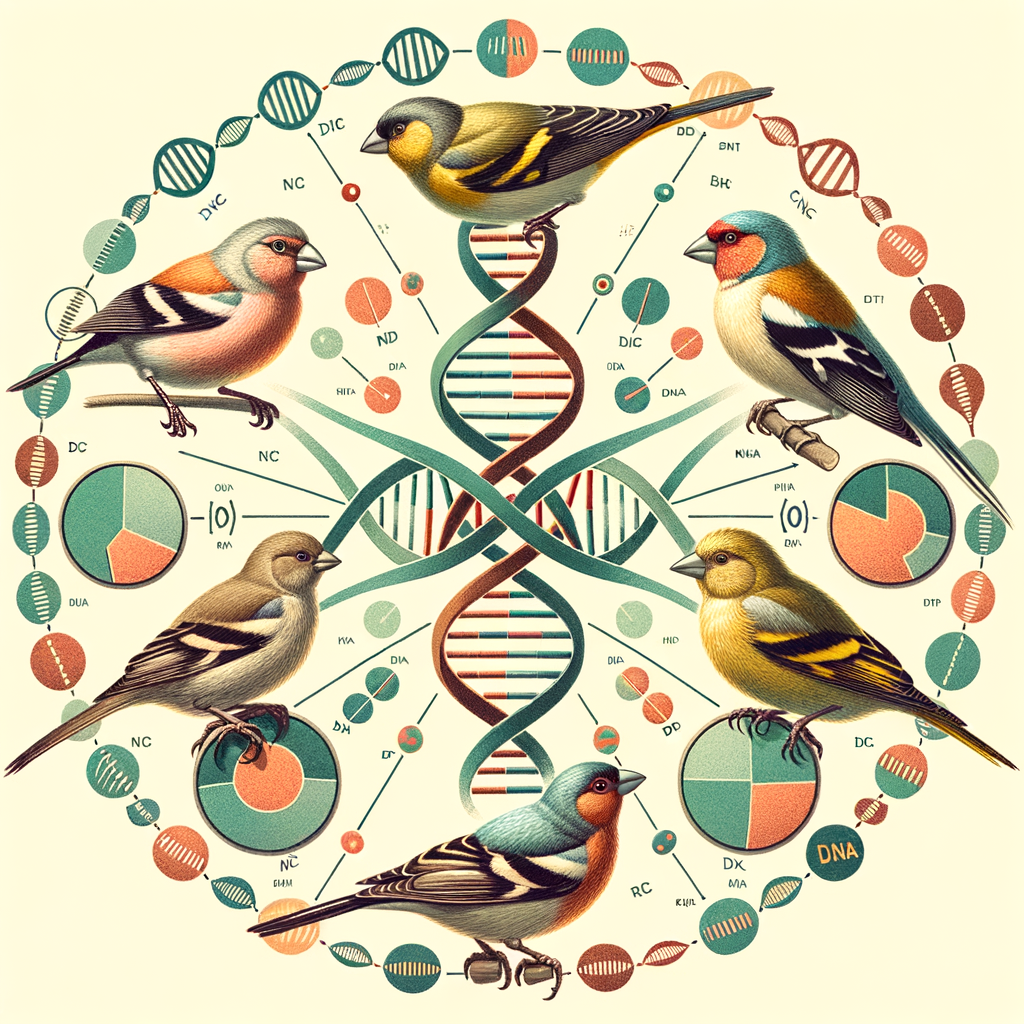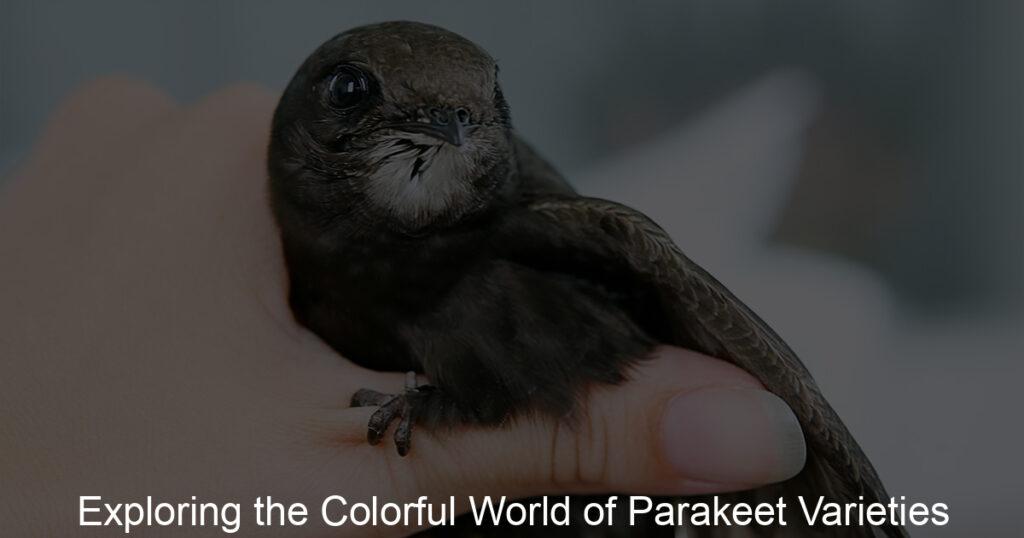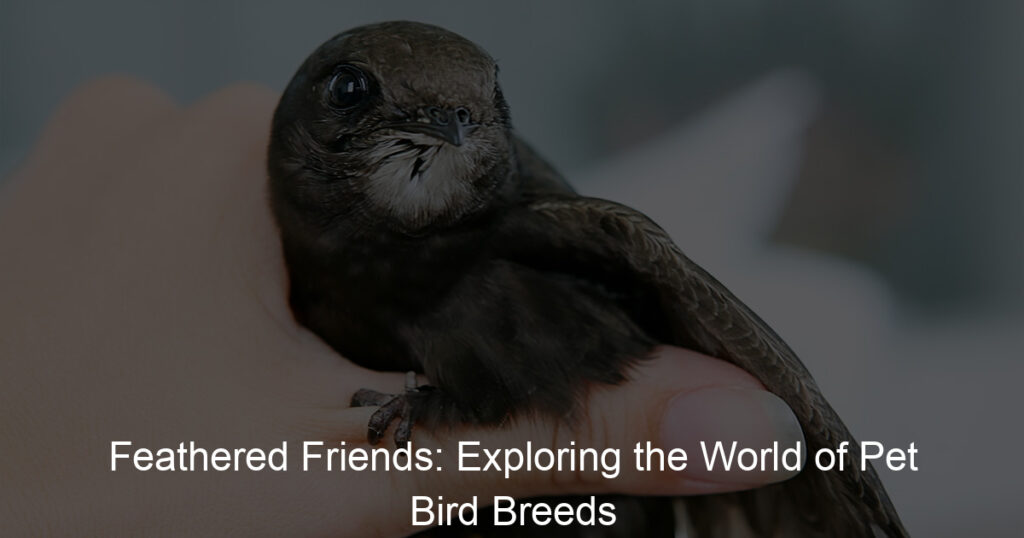
Introduction to Finch Morphs
Finches are fascinating creatures with a wide range of appearances and behaviors. One of the most interesting aspects of these birds is their morphs. But what exactly are finch morphs and why are they important to study? Let’s dive into the world of finch morphs and discover the answers to these questions.
- Understanding the term ‘Morph’
- Importance of studying Finch Morphs
In the world of biology, the term ‘morph’ refers to a distinct form or variation of a species. It’s like a different version of the same creature. For finches, morphs can be different in terms of color, size, shape, and even behavior. For example, some finches might have red feathers, while others have yellow or brown. These different versions are all called morphs.
Studying finch morphs is not just about appreciating their beauty. It’s also about understanding the secrets of nature. By studying these morphs, scientists can learn about how species evolve and adapt to their environments. For instance, a finch morph with a larger beak might be better at cracking seeds, giving it an advantage in certain environments. This could help scientists understand why certain species survive while others don’t.
Finch morphs also provide a window into the world of genetics. By studying the genes that control these morphs, scientists can learn more about how traits are passed from parents to offspring. This could lead to breakthroughs in fields like medicine and agriculture.
So, as you can see, finch morphs are not just pretty faces. They’re important tools for understanding the world around us. In the next sections, we’ll dive deeper into the science behind these fascinating creatures.
Exploring Finch Genetics
As we delve deeper into the world of finches, we discover that genetics play a significant role in their diversity. Let’s take a closer look at the fascinating world of finch genetics.
Genetics of Finch: An Overview
Finches, like all living organisms, inherit traits from their parents through genes. These genes are like tiny instruction manuals that tell the body how to grow and function. Now, let’s explore the basics of finch genetics and understand the genetic variations in finches.
-
Introduction to Finch Genetics
Finch genetics is a fascinating field of study. It involves understanding how traits such as beak size, feather color, and song patterns are passed from one generation to the next. For instance, did you know that the size and shape of a finch’s beak can tell us a lot about what it eats? A finch with a large, strong beak is likely to eat hard seeds, while a finch with a slender, pointed beak probably eats insects.
-
Understanding Genetic Variation in Finches
Genetic variation is what makes each finch unique. It’s the reason why some finches have bright red feathers while others are dull brown. This variation comes from the different combinations of genes that each finch inherits from its parents. For example, a finch might inherit a gene for red feathers from its mother and a gene for long tail feathers from its father. The combination of these genes would result in a finch with red feathers and a long tail.
Genetic variation is crucial for the survival of a species. It allows finches to adapt to changes in their environment, such as changes in food availability or climate. For example, if a drought causes a shortage of soft seeds, finches with strong beaks that can crack open hard seeds will have a better chance of survival. Over time, these strong-beaked finches will become more common, a process known as natural selection.
In conclusion, finch genetics is a complex and fascinating field. By understanding how genes influence the traits of finches, we can gain a deeper appreciation for these remarkable birds and the diversity of life on Earth.
Finch Morphs Genetics
When it comes to the fascinating world of finches, genetics play a crucial role in shaping their physical features. Let’s delve deeper into this topic.
- Role of Genetics in Finch Morphology
- Genetic Factors influencing Finch Morphs
Genetics is like the secret recipe that determines the shape, size, and color of a finch. It’s like a blueprint that guides the development of a finch from a tiny egg into a full-grown bird. For instance, the size and shape of a finch’s beak, which is crucial for its survival, is determined by its genes. Different species of finches have different beak shapes – some have sharp, pointed beaks for catching insects, while others have strong, broad beaks for cracking seeds. This is all thanks to the magic of genetics!
Genetic factors are like the invisible hands that shape the physical features of a finch. These factors include the genes that a finch inherits from its parents, as well as mutations that can occur in these genes. For example, a mutation in a gene called ALX1 has been found to influence the shape of a finch’s beak. This discovery was made by scientists who studied the famous finches of the Galapagos Islands, also known as Darwin’s finches. These finches are a great example of how genetic factors can influence the physical features of a species over time.
In conclusion, genetics play a crucial role in shaping the physical features of finches. By understanding the role of genetics in finch morphology, we can gain a deeper appreciation for the beauty and diversity of these amazing birds.
Finch Species Genetics
Finches are a diverse group of birds, with many different species each possessing unique genetic traits. Understanding these genetic variations can provide valuable insights into their survival strategies, adaptations, and overall biodiversity.
Finch Genetic Variation
Genetic variation is the foundation of biodiversity. It is the differences in the genetic makeup of individuals within a species that lead to the diversity we see in their physical traits and behaviors. Let’s delve deeper into the genetic variation among finch species and its impact on their morphs.
- Exploring the Genetic Diversity among Finch Species
- Impact of Genetic Variation on Finch Morphs
Finches are a large family of birds with over 200 species spread across the world. Each species has its own unique set of genetic traits, which contribute to their distinct appearances and behaviors. For instance, some species have sharp, pointed beaks adapted for eating seeds, while others have long, slender beaks for catching insects.
Genetic diversity among finch species is a result of evolution and natural selection. Over time, genetic mutations occur, and those that provide a survival advantage are passed on to future generations. This process leads to the development of new species with unique genetic traits.
Genetic variation plays a crucial role in the physical characteristics, or morphs, of finch species. Morphs are variations in the physical traits of a species, such as size, color, and beak shape. These variations are often a result of genetic differences.
For example, the Galapagos finches, also known as Darwin’s finches, are famous for their diverse beak shapes and sizes. These differences in beak morphology are a result of genetic variation and have allowed the finches to exploit different food sources on the Galapagos Islands.
Understanding the impact of genetic variation on finch morphs can provide insights into how species adapt to their environment and evolve over time. It also highlights the importance of preserving genetic diversity for the survival and adaptability of species.
Finch Genetic Research
Finch genetic research has been a fascinating field of study in recent years. Scientists have been able to uncover some significant findings that have broadened our understanding of these unique birds. Let’s delve into some of the key findings and their implications for conservation efforts.
- Key Findings from Recent Finch Genetic Studies
- Implications of Finch Genetic Research for Conservation Efforts
Recent research has revealed some intriguing facts about finch genetics. For instance, scientists have found that there is a high level of genetic diversity among finch species. This diversity is believed to be a key factor in the wide range of physical traits observed in these birds, from their vibrant colors to their varied beak shapes.
Another key finding is the discovery of a specific gene, known as the ALX1 gene, which plays a crucial role in the development of the finch’s beak. This breakthrough has helped scientists understand why different finch species have different beak shapes, which are adapted to their specific feeding habits.
Furthermore, studies have shown that environmental factors can influence the expression of certain genes in finches. This means that changes in the environment can directly impact the physical traits of these birds, a phenomenon known as phenotypic plasticity.
The findings from finch genetic research have significant implications for conservation efforts. Understanding the genetic diversity among finch species can help conservationists develop strategies to preserve this diversity and prevent the loss of unique finch species.
The discovery of the ALX1 gene and its role in beak development can also aid in the conservation of finches. By understanding how this gene works, conservationists can predict how changes in the environment might impact the physical traits of finches and take steps to mitigate these effects.
Moreover, the understanding of phenotypic plasticity in finches can guide conservation efforts. If environmental changes can influence the physical traits of these birds, conservationists can work to preserve and restore the habitats that finches need to thrive.
In conclusion, finch genetic research is not only fascinating but also crucial for the conservation of these unique birds. The more we understand about their genetics, the better equipped we are to protect them and their diverse habitats.
Case Studies on Finch Genetics
In this section, we delve into some fascinating case studies that have greatly contributed to our understanding of finch genetics. Let’s start with a famous one – Darwin’s Finches.
Case Study 1: Darwin’s Finches
Charles Darwin’s study of finches on the Galapagos Islands is a classic example of evolution in action. These birds have provided scientists with valuable insights into the role of genetics in species differentiation.
- Overview of Darwin’s Finches
- Genetic Insights from Darwin’s Finches
Darwin’s finches are a group of about 15 species of passerine birds. They are named after Charles Darwin, who first noted the differences in their beak shapes during his voyage on the Beagle. These differences in beak shape and size, which are genetically determined, enable the birds to exploit different food sources on the Galapagos Islands.
The study of Darwin’s finches has provided significant insights into how genetics can influence physical traits and adaptation. For instance, a gene called ALX1 was identified as a key player in determining beak shape among these birds. Changes or mutations in this gene can lead to variations in beak shape, which in turn can influence a bird’s ability to access and consume different types of food. This is a prime example of how genetic variations can drive natural selection and evolution.
In conclusion, the case of Darwin’s finches offers a clear demonstration of how genetic variations can lead to physical differences among species, and how these differences can influence survival and reproduction. This case study has been instrumental in shaping our understanding of the role of genetics in evolution.
Case Study 2: Gouldian Finches
-
Introduction to Gouldian Finches
Gouldian Finches, also known as Lady Gouldian Finches or Rainbow Finches, are small birds native to Australia. They are known for their vibrant, rainbow-colored feathers. These finches are not only beautiful but also fascinating creatures. They have three primary color morphs – black, red, and yellow-headed. Interestingly, these color variations are not just for show; they play a crucial role in the survival and mating preferences of these birds.
-
Genetic Studies on Gouldian Finches
Scientists have conducted numerous studies to understand the genetics behind the color variations in Gouldian Finches. One key discovery is that the color of a finch’s head is determined by a single gene. This gene can be either dominant or recessive, leading to the different color morphs.
For instance, the black-headed morph is dominant, while the red and yellow-headed morphs are recessive. This means that if a finch has one black-headed gene and one red-headed gene, it will be black-headed because the black-headed gene is dominant.
Another fascinating finding is that these color variations also influence the birds’ behavior and survival. For example, red-headed finches are more aggressive, while black-headed ones are better at finding food. This shows how genetics can influence not only a bird’s appearance but also its behavior and survival strategies.
Head Color Gene Type Behavior Black Dominant Better at finding food Red Recessive More aggressive Yellow Recessive Less aggressive, more cautious
Key Takeaways
In this blog post, we have delved into the fascinating world of finch genetics. We have explored how finch genetics help us understand evolution and the role of genetic research in finch conservation. Let’s summarize the key points we have learned.
- Importance of Finch Genetics in Understanding Evolution
- Role of Genetic Research in Finch Conservation
Finch genetics provide a unique window into the process of evolution. By studying the genetic makeup of different finch species, scientists have been able to trace their evolutionary history. For instance, the different beak shapes and sizes among finch species are a result of genetic variations. These variations are believed to have evolved over time in response to different environmental factors, such as food availability. This highlights the power of genetics in shaping species and their characteristics over time.
Genetic research plays a critical role in finch conservation. By understanding the genetic diversity within and between finch species, conservationists can develop strategies to preserve this diversity. For example, genetic research can help identify distinct populations within a species that need to be conserved. It can also help in understanding the impact of human activities on finch populations and their genetic diversity. Thus, genetic research is a powerful tool in the fight to conserve finch species and their habitats.
In conclusion, finch genetics offer a wealth of information about evolution and conservation. By studying the genetics of these fascinating birds, we can gain insights into the process of evolution and the importance of genetic diversity in species conservation. As we continue to explore the world of finch genetics, we can look forward to many more exciting discoveries in the future.
Conclusion
As we come to the end of our exploration into the fascinating world of finch genetics, we can reflect on the incredible diversity and complexity of these small birds. We have delved into the different species of finches, their unique genetic traits, and the various case studies that have helped us understand their evolution. Now, let’s look ahead to what the future holds for finch genetic research and share some final thoughts on the study of finch morphs.
- Future Directions for Finch Genetic Research
- Final Thoughts on the Study of Finch Morphs
Finch genetic research is a rapidly evolving field. With advancements in technology and our growing understanding of genetics, we can expect to see even more exciting discoveries in the future. Scientists are keen to explore the genetic basis of finch behavior, such as their song patterns and mating habits. There is also interest in studying how climate change and habitat loss may impact finch genetics and diversity. These future directions promise to deepen our knowledge and appreciation of these remarkable birds.
The study of finch morphs has provided invaluable insights into the process of evolution. By examining the different beak shapes and sizes, we have learned how finches adapt to their environment and how genetic variations contribute to their survival. This research not only enhances our understanding of finches but also sheds light on the broader principles of biology and genetics. As we continue to explore and learn, the humble finch will undoubtedly remain a symbol of nature’s incredible adaptability and diversity.
In conclusion, the study of finch genetics is a fascinating and ever-evolving field. It offers us a unique window into the complexities of evolution and the incredible diversity of life on our planet. As we look to the future, we can anticipate many more exciting discoveries and insights from this remarkable area of research.








